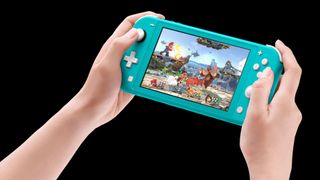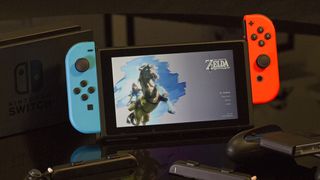The new Nintendo Switch Lite undermines what made the original Switch so special
A rare misstep from Nintendo?

The Nintendo Switch Lite is smaller, lighter and cheaper than a regular Nintendo Switch, and, most importantly after months of rumors, it’s real, having been announced by the House of Mario.
Having options as to how to spend our hard-earned gaming money is welcome, and the prospect of a more affordable Switch is definitely tantalising.
But the Nintendo Switch Lite is almost certainly not better than its existing stablemate. And that’s before considering the potential for it to be problematic overall for the company’s existing player base, as it undermines what made the first Nintendo Switch hardware so unique and special in the first place.
Price versus performance
Cheaper than the original at $199 (AU$329, or roughly £160), the Nintendo Switch Lite ditches the option for docked TV play for a handheld-only experience. That also means you’ve no longer the option to detach the Joy-Con controllers too.

And with these changes, the Nintendo Switch Lite becomes just another handheld. A handheld that has some great games, admittedly, but one that has none of the tactile, transforming toy-like wonder that brought so much excitement at the original console’s initial reveal.
It promised to be the console to fit all situations. You had on-the-go play, ala the Nintendo Switch Lite, but you also had docked TV big-screen play, including optional motion controllers, as well as the ability to huddle around a kick-standing Switch screen propped up solo, for gaming friends who needed to get their multiplayer game on wherever they may be.
The Nintendo Switch Lite becomes just another handheld
The Nintendo Switch Lite does away with all this possibility, removing the dock and kickstand entirely, and as a result has also removed the hardware flexibility that made the console so attractively unique in the first place.
Get daily insight, inspiration and deals in your inbox
Get the hottest deals available in your inbox plus news, reviews, opinion, analysis and more from the TechRadar team.
The argument, of course, will be that for many existing Switch owners, it primarily is just another handheld console. Nintendo’s choice to make a handheld-only console has been informed by data it’s seen from its player’s user habits, according to still-superbly-named CEO Doug Bowser, suggesting that couch-based-play on the Nintendo Switch isn’t perhaps as popular as you’d imagine.
“It’s more about how we’ve observed them playing,” Bowser said of the console’s audience when speaking to The Verge. “We have the ability to track how people play games and play our titles, so I would say that it’s really an option that offers more choices to people.”
A layer of complexity
But what this argument does not defend is the fact that this new hardware introduces a layer of complexity when purchasing games for the Nintendo Switch Lite, effectively splitting the player base.
Put simply, some titles will not work properly with the Nintendo Switch Lite, while a few more will only work if you grab some sold-separately Joy-Cons and pair them with the new hardware.

“If a game supports Joy-Con functions such as HD rumble, IR Motion Camera and Joy-Con motion sensors, some features will not be available using Nintendo Switch Lite alone,” reads a line on the Nintendo Switch Lite product page, which knocks out instant, out-of-the-box access to Mario Tennis Aces, Snipperclips and Snipperclips Plus.
Then there are the games that don’t support handheld mode, such as Super Mario Party, 1-2-Switch and the majority of the Nintendo Labo Toy-Con kits – or, in other words, a swathe of the console’s most-popular social multiplayer games. To play them you’ll need additional Joy-Cons – as well as a means to charge them, such as the Charging Grip accessory, as you won’t be able to charge them through the Nintendo Switch Lite itself as you would with a regular Switch.
Nintendo has history with this sort of manoeuvre – there was a whole subset of Nintendo 3DS games that would only work properly if you had a New Nintendo 3DS – Xenoblade Chronicles 3D being one such splintered title.
Of course, if these games and features are of desperate importance to you, there’s a simple fix – avoid the Nintendo Switch Lite and get the original model instead. But it does then put an implied (and who knows whether or not in time, mandated) impetus to make games that do not serve the richer feature set of the original Switch in order to better serve the wider Switch family. That’d be a crying shame.
With rumors of a full-on Nintendo Switch 2, or Nintendo Switch Pro still circulating, here’s hoping its introduction won’t further fracture and complicate what until this point has otherwise been a near-perfect playtime gadget.
- Best Nintendo Switch games: from Super Mario Odyssey to Breath of the Wild
- New Nintendo 3DS XL review: the other flagship handheld console
Gerald is Editor-in-Chief of iMore.com. Previously he was the Executive Editor for TechRadar, taking care of the site's home cinema, gaming, smart home, entertainment and audio output. He loves gaming, but don't expect him to play with you unless your console is hooked up to a 4K HDR screen and a 7.1 surround system. Before TechRadar, Gerald was Editor of Gizmodo UK. He is also the author of 'Get Technology: Upgrade Your Future', published by Aurum Press.

